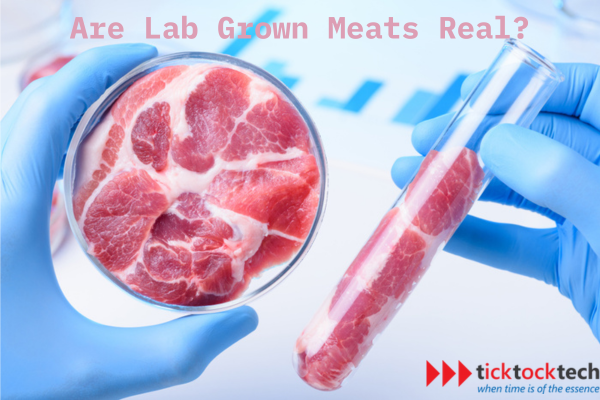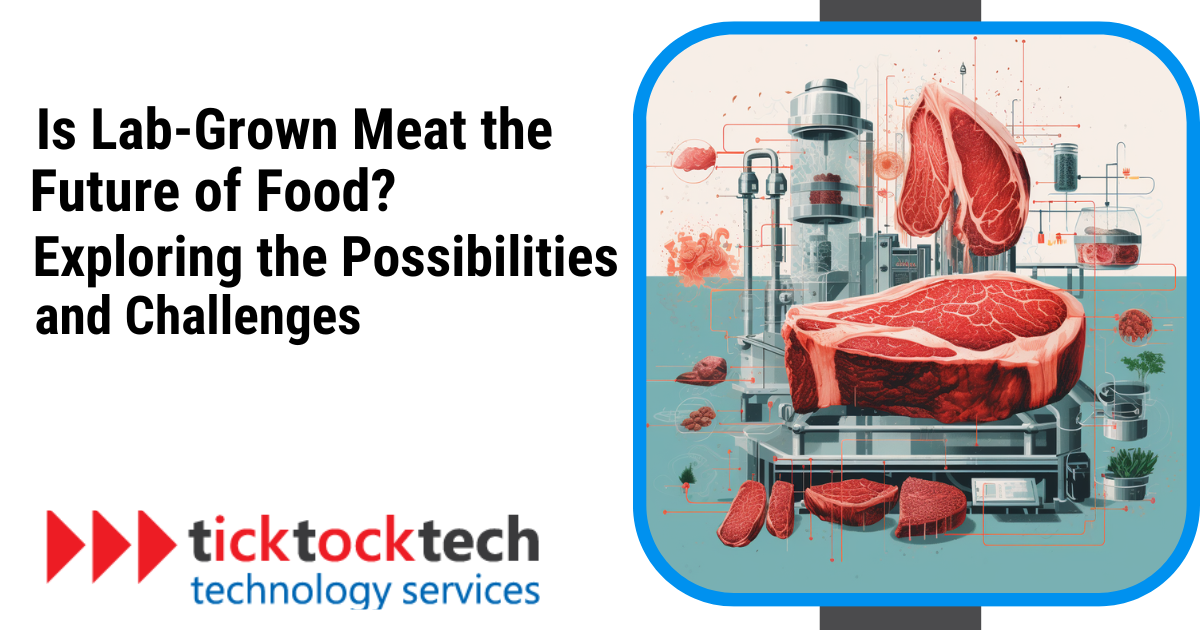As part of environmental sustainability, and the reduction of greenhouse gases, sustainable farming is important. Cattle farming produces a significant amount of greenhouse gases, making it a major contributor to climate change. It pollutes both air and water. One of the possible and proposed ways to achieve sustainability in farming, and the environment is by cultured lab-grown meat. Although this is futuristic, the target has been set for the future. We all know meat is a primary source of protein, close to eggs. Will the new lab-grown meat offer the same benefits? If it does, will it be accepted by the public? Is the lab-grown meat the food of the future? Walk with me…
What is a Lab-Grown Meat?
Lab-grown meat, also known as cultured meat, is produced by cultivating animal muscle cells in a lab rather than slaughtering animals. This procedure begins with removing a small number of stem cells from an animal and placing them in a nutrient-rich environment where they multiply and form muscle tissue.
Lab-grown meat, unlike plant-based meat alternatives, is made from actual animal tissue grown under controlled conditions.
Related: What is Electronic Waste (E-waste) Recycling and How is it done in 2024?
The development of lab-grown meat seeks to address several pressing issues. It provides a sustainable alternative to traditional meat production. Which contributes significantly to greenhouse gas emissions, accounting for nearly 60% of the agricultural industry’s emissions.
Cultured meat has the potential to reduce demand for livestock farming. This reduces environmental impacts such as land degradation, water consumption, and pollution. Furthermore, it promises ethical advantages by eliminating the need to slaughter animals for food. Consistent with growing concerns about animal welfare in food production.
How Are Lab-Grown Meat Made?
Animal stem cells are the first step in the production of lab-grown meats. The key elements of muscle and other tissues are these cells. These cells are cultured in a broth rich in nutrients in the laboratory, which promotes their growth and multiplication. The cells proliferate and eventually start to resemble the muscle fibers found inside the body of an animal.
Bioreactors, which are regulated environments with optimal growth conditions, are used for this process. The muscle fibers are removed once they have grown to a suitable size and processed into consumer-friendly shapes like cutlets or nuggets.
Is there any Nutrient in Cultured Meat?
Indeed, the nutrients in cultured meat are comparable to those in meat from conventional farms. Similar amounts of essential amino acids, protein, and other nutrients are present as compared to the original animal meat. Lab-grown meat is similar to traditional meat in terms of nutrition because it is made from actual animal tissue. Since it comes from animal cells, it is unrelated to veganism even though it provides a more morally and ecologically sound substitute for conventional methods of producing meat.
Is Cultured Meat a Solution for Environmental Issues?
Although cultured meat may have positive effects on the environment, it is not a remedy for climate change at this time.
Even though it might greatly lower the greenhouse gas emissions brought on by traditional livestock farming. Technology is still being developed to produce cultured meat at a large enough scale to meet climate goals.

Experts warn that building the infrastructure required to produce cultured meat on a large scale would take years, even if the technology were perfected today. possibly missing the Paris Agreement’s specified deadlines for cutting emissions.
See Also: Carbon Neutrality vs. Net Zero
Challenges of Lab-Grown Meat
Although it’s starting to become available, lab-grown meat won’t be readily available for purchase anytime soon.
The United States has granted regulatory approval for the first lab-grown chicken, enabling its sale in select restaurants. Although this is a big step forward, more approval is still needed before cell-cultivated beef, pork, or seafood can be produced.
Although the cost of producing meat grown in laboratories is still high, it should go down as technology advances. For instance, a startup in the Netherlands projects that once large-scale production is feasible, the price drop to roughly $80 per kilogram, a 5-ounce burger would cost slightly more than $11.
The enormous quantities required for mass market distribution cannot yet be supported by current bioreactors, so scaling up production to feed a large population economically remains a significant challenge. So, maybe that’s for the future kids.
Pros and Cons of the Lab-Grown Meat
Lab-grown meat offers benefits and drawbacks:
Pros:
- Environmental Impact: It uses less land and water, reducing its ecological footprint.
- Animal Welfare: No animals are harmed in its production, improving ethical standards.
- Health Benefits: Potentially lower in harmful fats and higher in beneficial nutrients.
- Food Security: Could provide stable protein sources in challenging environments.
Cons:
- High Costs: Production is currently expensive, limiting accessibility.
- Public Perception: Some people are skeptical about consuming meat from a lab.
- Cultural Impact: Could disrupt traditional farming, affecting livelihoods.
- Technical Challenges: Scaling production and mimicking traditional meat’s taste are difficult.
- Regulatory Hurdles: Needs clear regulations for safety and labeling.
Is Lab-Grown Meat the Future of Food?
Lab-grown meat could shape the future of food by offering sustainable, ethical alternatives to traditional meat production. It utilizes fewer natural resources, avoids animal cruelty, and could potentially offer healthier options. However, despite these advantages, challenges such as high production costs, consumer skepticism, and technological hurdles in scaling production persist. Plus, it’s not a quick fix for climate change due to the time required to develop the necessary infrastructure. As technology advances and regulatory bodies adapt, lab-grown meat might become a more common sight in our diets, but widespread commercial availability and acceptance are still on the horizon.

